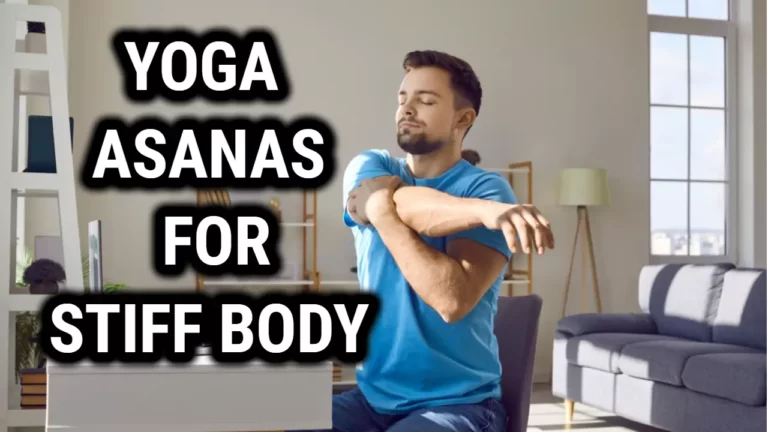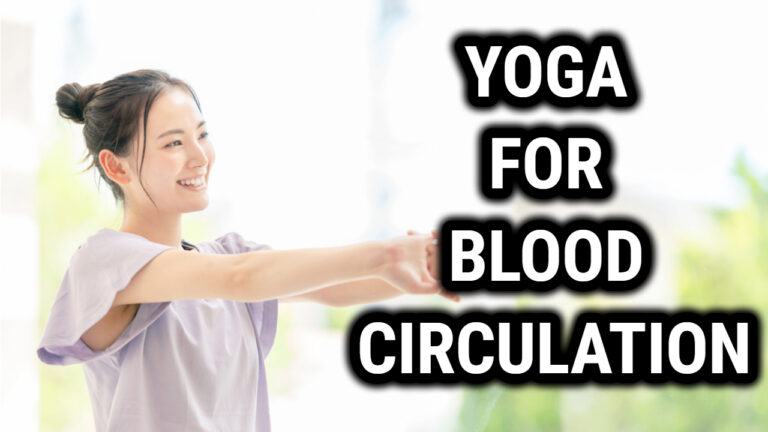Easy-To-Follow Basic Yoga Poses – Perfect For Anyone

Have you ever wanted to try yoga but felt intimidated by the thought of having to do complex poses? Well, fear no more! This article will provide you with easy-to-follow basic yoga poses that are perfect for anyone.
Whether you’re just starting out or you’ve been practicing for years, these simple postures can help you achieve balance and relaxation in your life.
The practice of yoga has many benefits, such as improving flexibility and strength, reducing stress levels, and calming the mind. It is also a great way to increase your energy levels and stay focused throughout the day. With these basic yoga poses, you will be able to reap all of the rewards of this ancient practice without having to put in too much effort.
So if you’re looking for an easy way to get into yoga or just want some simple postures that can help keep your body balanced and healthy, then this article is perfect for you. Read on to learn about some easy-to-follow basic yoga poses that are suitable for all skill levels.
Benefits Of Practicing Yoga

Practicing yoga can provide numerous benefits for both the mind and body. From stress relief to improved physical health, there are many advantages to be gained from incorporating yoga into your daily routine.
Here are a few of the most notable yoga benefits:
- Mental Health Benefits: Practicing yoga can help reduce anxiety and depression while also improving overall mental clarity and focus. Additionally, it can promote positive thinking and help reduce negative thoughts.
- Physical Health Benefits: Regularly practicing yoga can improve flexibility, strength, balance, and posture. It also helps promote better breathing habits and circulation of blood throughout the body.
- Stress Relief Benefits: Yoga is known for being an effective form of relaxation that helps relieve stress and tension in the body. It can also be used as a form of meditation to allow for deeper introspection and mindfulness.
In addition to these benefits, practicing yoga can also provide emotional benefits such as increased self-esteem, improved relationships with others, improved self-expression, increased self-awareness, and better overall energy levels. With these impressive benefits in mind, it’s easy to see why so many people are drawn to this popular form of exercise.
Getting Started With Yoga
Getting started with yoga can be intimidating, but it doesn’t have to be. Knowing the basics of yoga and understanding which poses are best for beginners is key. With just a little preparation, you can easily develop a safe and effective yoga routine.
To begin your practice, start by researching some basic poses that are suitable for beginners. Examples of these include Mountain Pose, Downward Dog, Child’s Pose and Cat/Cow Pose. Before attempting any new pose, make sure you understand the correct form and alignment to ensure safety and avoid injury.
When starting yoga for the first time, it can be helpful to join a class or take an online tutorial led by an experienced instructor. This will ensure that you learn proper technique while also getting familiar with basic terminology used in yoga classes.
Once comfortable with the basics of yoga, create your own home practice using beginner-friendly poses from your research or tutorial background knowledge. Doing so will help build confidence as you learn more about the different postures and movements of yoga over time.
With a bit of research and dedication to practice regularly, anyone can easily become well-versed in the basics of yoga – even if they’re just starting out!
Types Of Yoga Poses

Once you’ve gotten the hang of the basics, it’s time to move on to the more varied types of yoga postures. Yoga poses are broken down into four main categories: standing poses, balancing poses, seated poses, and twists poses.
Standing Poses: Standing poses are typically one of the first postures that a beginner may learn. These postures help to give practitioners a sense of grounding as they help build strength and stability throughout the body. Some common standing yoga postures include Warrior I and II, Chair Pose, Triangle Pose, and Tree Pose.
Balancing Poses: Balancing poses help practitioners develop coordination and concentration while strengthening their core muscles. They may be used as a stepping-stone for more difficult yoga postures or can be held longer for more difficulty. Some examples of balancing postures include Eagle Pose, Half Moon Pose and Crow Pose.
Seated Poses: Seated postures focus on flexibility and strengthening in the hips and legs while also working to improve balance in the body. These can range from relatively simple hip openers such as Easy Cross Legged Pose to more complex ones like Half Lord of the Fishes pose or Revolved Triangle pose.
Twists Poses: Twists are great for releasing tension in both your spine as well as your internal organs due to their twisting motion. Examples of twist postures include Marichyasana III (Marichi’s twist), Half Lord of The Fishes pose (Ardha Matsyendrasana) and Bharadvajasana (Bharadvaja’s twist).
With so many options available, it’s easy to find something that resonates with you! So get out there and explore – who knows what wonders await!
Chair Pose
Chair Pose also known as Utkatasana in Sanskrit, Chair Pose is a great pose to help build strength and stamina. It can be done while sitting in a chair or while standing up.
To begin Chair Pose, start by standing with your feet hip-width apart and your arms raised above your head. Bend your knees and lower yourself as if you were about to sit in an invisible chair. Your thighs should be parallel to the floor, and your back should remain straight throughout the pose. Keep your neck relaxed and gaze forward.
Hold this position for several breaths before slowly releasing the pose by straightening your legs and lowering your arms back down at your sides. This excellent yoga chair pose helps build balance, strength, and flexibility all at once. Try slowly increasing the length of time you hold this pose over time to deepen its effects.
Warrior One And Two
Warrior One and Two are two of the most basic warrior poses in yoga. The Warrior One pose is a strong, empowering stance which helps to build strength and stability throughout the body.
To enter this pose, begin standing with both feet together. Then, step your left leg back into a wide lunge, keeping your front knee bent at a 90 degree angle. Stretch your arms out above your head, palms facing each other as you slightly arch your back. Hold this position for 5-10 breaths before repeating on the opposite side.
The Warrior Two pose is another classic yoga posture that builds strength and stability in the lower body.
This pose starts from a standing position with both feet together. Step one foot forward into a wide stance, then bend the front knee at a 90 degree angle while extending your arms out to either side of you at shoulder level with palms facing down.
Make sure to keep your back heel grounded and look towards the horizon or up towards the sky if comfortable doing so! Hold this posture for 5-10 breaths before switching sides.
Both Warrior One and Two poses are an excellent way to stretch and strengthen the body while calming and centering the mind. These beginner warrior poses can be easily incorporated into any yoga practice.
Also Read: What Are The Ideal Asanas For The Morning Yoga Routine Daily?
Tree Pose
Transitioning from the Warrior poses, we come to the Tree Pose – a balancing pose that provides grounding energy and strengthens our leg muscles. Like a tall tree standing strong against the elements, this pose promotes stability and balance.
To get into Tree Pose, start by standing in Mountain Pose with your feet together. Bend your right knee and bring your right foot up to rest on your left inner thigh. As you do this, press your palms together at heart center to form a prayer mudra. Make sure that you are evenly balanced between both of your legs as you stand straight and tall like a tree.
Be mindful to keep your weight evenly distributed between both of your feet when positioning yourself in the Tree Pose. Your right foot should not be pressing down too hard against the upper thigh but rather lightly resting there instead.
With each exhale breath out, use it as an opportunity to root yourself deeper into the ground as if drawing energy from beneath you for extra stability.
Remember to stay present with every breath that passes through you and enjoy the deep connection you are forming with yourself during this pose. By connecting with your body and its strength, you can experience powerful feelings of balance and peace within yourself.
Corpse Pose
Corpse Pose, or Shavasana, is a basic yoga pose that is deeply restorative and meditative. It looks like it sounds: you’ll be lying flat on your back with your arms at your sides like a corpse. This pose has many benefits, making it perfect for anyone looking to relax and restore their body.
Here are three reasons why you should try Corpse Pose:
- Promotes relaxation: Corpse Pose helps the body and mind enter into a state of deep relaxation. This is because when we lie down on our backs, our muscles get to rest and our breathing slows down naturally.
- Restores energy levels: By taking time to pause in this pose, we give our bodies time to recover from all of the activity that we do throughout the day. We can use this time to let go of any stress or tension that may have built up throughout the day.
- Enhances meditation practice: Corpse Pose can also be used as part of a meditation practice because it encourages us to stay still and focus on our breathing. This helps us become more mindful and aware of our thoughts and feelings.
The combination of physical relaxation, energizing restoration, and mental clarity makes Corpse Pose an ideal choice for anyone looking for a simple yoga pose that offers tremendous benefits. With regular practice, one can enjoy improved physical health as well as enhanced mental clarity and peace of mind.
Tips For Improving Your Practice
Now that you have learned the basics of Corpse Pose, it is time to start improving your yoga practice. Whether you are a beginner or an experienced yogi, there are tips and techniques that can help you deepen your practice. Below are some simple steps to get started on improving your yoga routine and taking it to the next level.
Firstly, try to focus on the breath when doing yoga poses. Your breathing should be slow and steady as you move through each pose. This helps to keep your body relaxed and allows for better alignment in the poses.
Also, remember to use props if needed such as blocks or straps. Props can make poses more accessible for beginners or those with physical limitations.
Secondly, listen to your body during practice. Pay attention to how each pose feels in your body and note any areas where you feel tension or discomfort.
If something doesn’t feel right, don’t push yourself too hard – instead modify the pose until it feels comfortable for you. Finally, look for ways to challenge yourself in each pose by going deeper into the posture or holding it longer than normal.
With regular practice, these small changes will help build strength and flexibility over time while also deepening your connection with yoga overall.
These are just a few tips to help you improve your yoga practice whether you’re a beginner or an experienced yogi! With dedication and patience, these techniques can help take your practice even further.
Related Read: Sitting Yoga Poses: Perfect for All Ages and Skill Levels
Conclusion
Yoga is an incredibly beneficial practice that anyone can do. Practicing yoga on a regular basis will improve your physical and mental health, as well as bring greater awareness to your body and mind.
For example, my friend Sarah recently decided to give yoga a try due to feeling overwhelmed by stress. She began with the basic poses mentioned above and within just a few weeks she felt more relaxed and in tune with her body. She was amazed at how quickly she noticed the positive effects of practicing yoga regularly.
So if you’re looking for an effective way to reduce stress and improve your physical wellbeing, I highly recommend giving yoga a try! With these easy-to-follow basic poses perfect for anyone, you’ll be on your way to finding inner peace and balance in no time.






